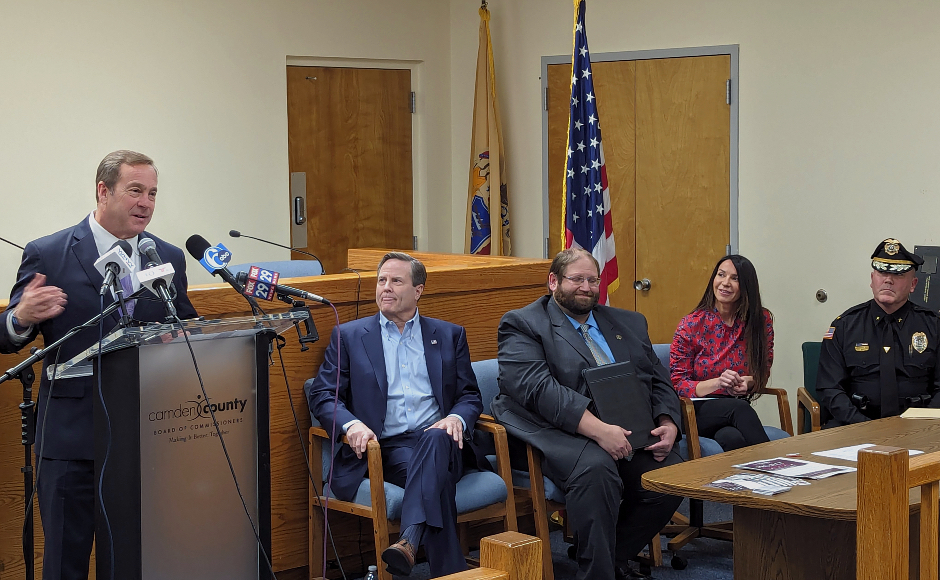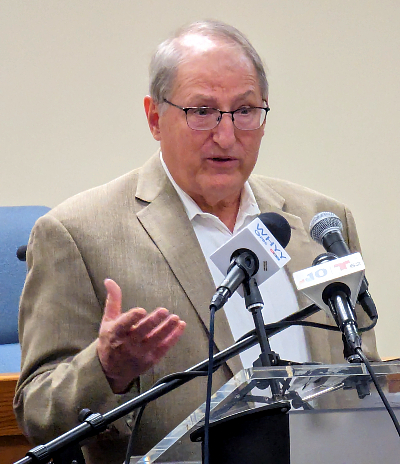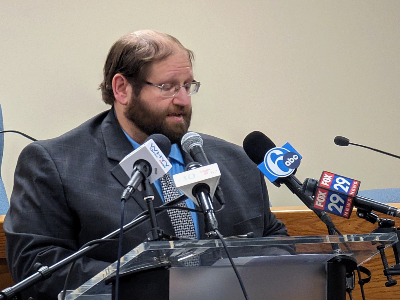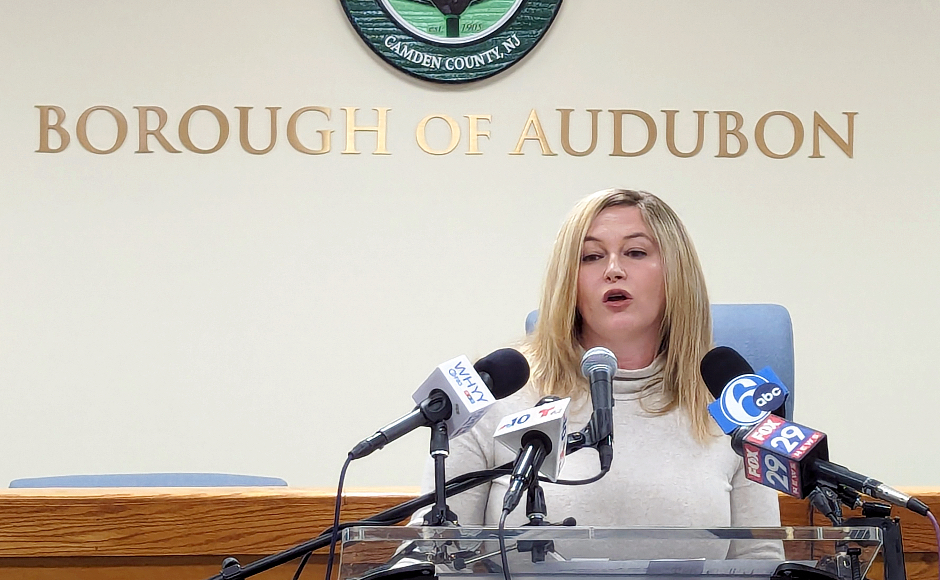Project SAVE, which diverts nonviolent offenders from the criminal justice system, has helped nearly 3,500 people access addictions treatment since 2019.
By Matt Skoufalos | March 14, 2024
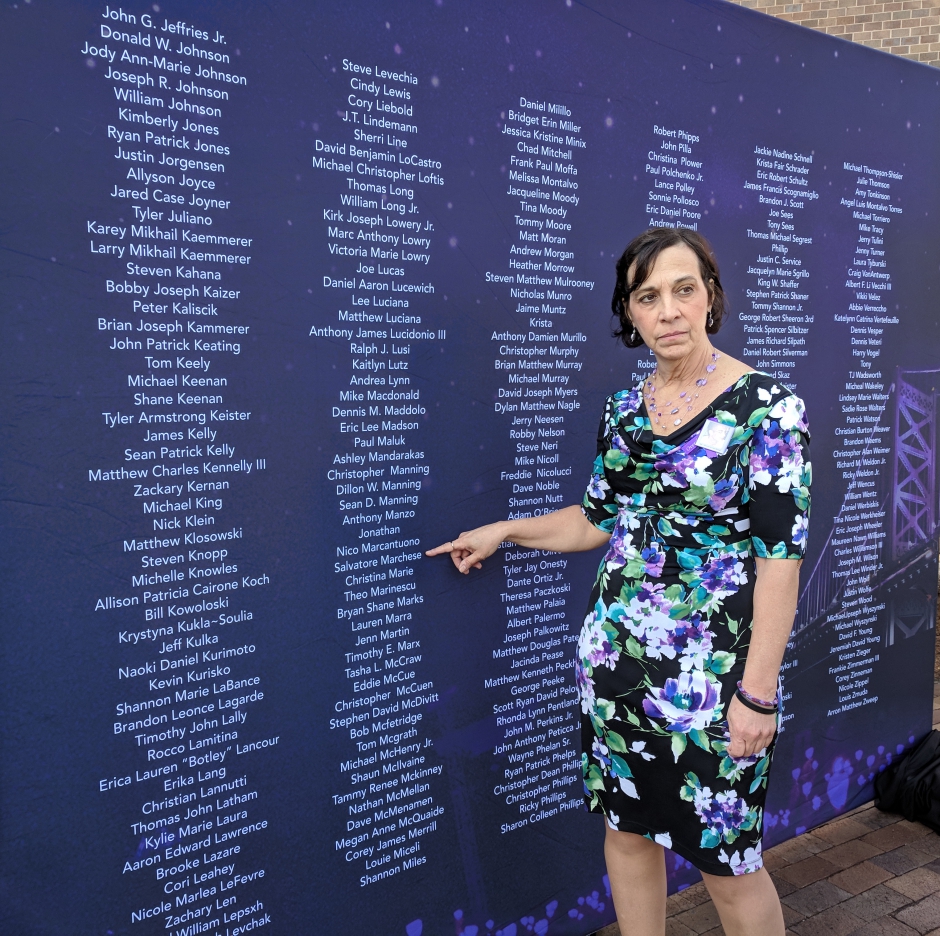
Addictions awareness advocate Patty DiRenzo points to her son’s name on a wall of those lost to opioid abuse in Camden County. Credit: Matt Skoufalos.
The opioid crisis in America has claimed millions of lives, cost the country trillions of dollars, and monopolized law enforcement resources for more than a decade.
Aside from undoing the stigma associated with the mental and behavioral health issues that drive addictions-related encounters with the criminal justice system, programs that connect vulnerable people with treatment services are making a significant impact on the workload that the police and judiciary face.
In Camden County, the option to refer a criminal defendant to Project SAVE (Substance Abuse Visionary Effort) has opened another pathway to resolving the public health crisis of addictions for five years running.
In that time, the program enrolled 3,449 people out of 5,575 connected with a SAVE advocate through the court system, a 62 percent rate. In total, Project SAVE has made 10,141 referrals for service (a count that includes multiple referrals of some of the same people) since 2019.
Camden County officials celebrated that milestone Thursday in the Audubon municipal courtroom with testimonials from program staff, representatives from local law enforcement and the Camden County Prosecutor’s Office (CCPO), people served by Project SAVE, and its early supporters.
The latter includes retired Camden County Judge Robert Zane, who spoke about the birth of Project SAVE in the Gloucester County municipal courts four years before Camden County launched its own pilot program in 2018.
In those days, the climate in the criminal justice system was somewhat beleaguered, Zane said.
To staff emerging from the massive changes of statewide criminal justice and bail reforms, adding one, more, new program — even an elective one — felt like a heavy lift.
But after six years (including the pilot) and more than 10,000 referrals for service, they feel vindicated, he said.
“I think it shows the strength of this program; the belief in this program,” Zane said.
“It’s been an amazing thing to watch.
“I really have to say congratulations to them, and hope we can keep this project going, make it stronger, and even better.”
CCPO Deputy Section Chief Greg Audino described the scope of the impact the program has had, calling addiction “the silent partner in a vast majority of the offenses committed” in Camden County.
Audino said authorities recognize that addictions-driven crimes aren’t anything that police can arrest their way out of; neither is incarceration anything more than a temporary suppression of problems that are rooted in addiction.
“The desire to punish those who commit crimes sometimes blinds us to the most important ways to prevent them from happening again,” Audino said. “And if we truly want to make our communities safer, prevention is the key to everything.”
He described the project as lifesaving in its intention: “a very simple mission attached to an extremely complicated process.”
Before Project SAVE, prosecutors’ options for managing an addictions-related offender — incarceration, community service, financial penalties — were limited, Audino said.
Referring someone for addictions treatment services is about “giving them hope when they had none, showing them purpose when they didn’t believe they had one, and getting them to believe in themselves when they never thought it was possible.
“To punish a life is one thing, but to help save a life, that’s something absolutely beautiful,” he said.
“It helps turn offenders back into productive members of society. It brings families back together.
“It gives parents back the children they thought were gone forever,” Audino said. “It makes neighborhoods safer because those who terrorized them are now making amends.”
The program has demonstrated its utility as a powerful tool, not only for deferring people battling addictions from a criminal justice system that can’t address their disease, but also in helping identify other co-occurring underlying mental health conditions with which they might struggle, said Colleen Snow, Assistant Director of the Camden County Office of Mental Health and Addiction, and a former Project SAVE director.
In 2024, Camden County will spend $350,000 on the initiative, which includes some aid from higher levels of government as well as funding New Jersey received in national opioid settlements.
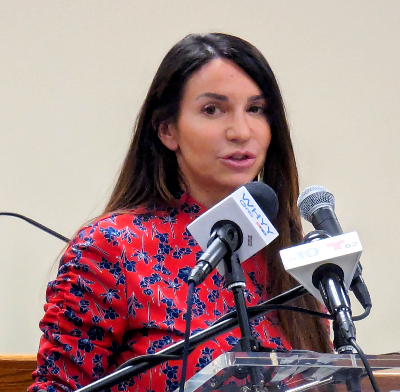
Colleen Snow, Ass’t. Dir., Camden County Office of Mental Health and Addiction. Credit: Matt Skoufalos.
Since its inception, Project SAVE funding has been expanded to include $100,000 annually for dedicated mental health services.
Those dollars help people referred for addictions treatment to get any other underlying behavioral issues diagnosed.
Snow described that as the county government having a “vision is to bring everyone who’s needed to the table,” especially since those enrolled in Project SAVE report a high incidence of mental health issues in their medical histories.
“You don’t just have one diagnosis,” Snow said.
“If your primary is substance use disorder, it’s highly likely that you have a secondary diagnosis of mental health.”
Once people are referred to the program, that mental health component can facilitate their treatment needs in a variety of settings, as well as referrals for wraparound services, Snow said.
These may include outpatient services, mental health counseling, partial hospitalization programs (PHP), residential inpatient treatment, medication-assisted treatment (MAT), sober living facilities, detoxification centers, and sub-acute withdrawal centers.
The most moving testimonial of the day came from Felicia, a Camden County employee who spoke about how much her life has changed five years into her long-term recovery.
After her third DUI, she described being in the courtroom, consumed by the fear of not being able to glimpse a future for herself. Project SAVE gave her an opportunity to change that.
“My daughter has her mother,” she said. “I’m present; I’m here, I’m dependable. I’m back to being my mom’s daughter.
“I’m all the things I wasn’t when I was in my mess,” Felicia continued. “I wouldn’t be who I am today without that program.”

